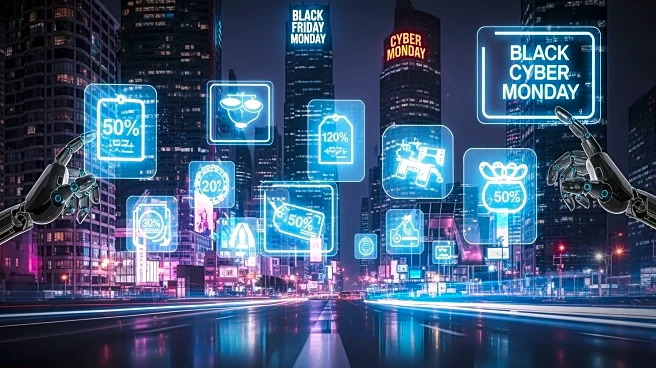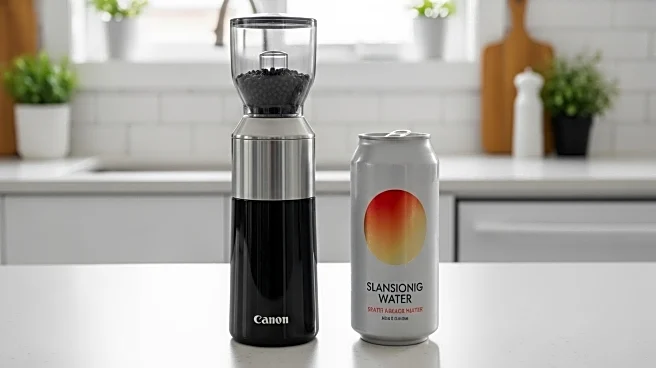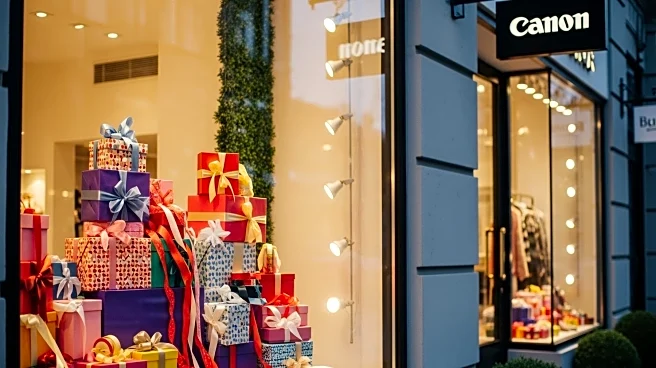What's Happening?
As Black Friday Cyber Monday (BFCM) approaches, brands are gearing up for the biggest sales weekend of the year. The event has evolved into a multi-week global retail blitz, starting in early November
and peaking after Thanksgiving. According to Shopify data, BFCM sales in 2024 were up 24% over 2023, totaling $11.5 billion in global sales from Shopify merchants alone. Brands are employing various strategies, such as early customer acquisition efforts, choosing the right discounts, and timing sales to support brand goals. Companies like Jones Road Beauty and Beekman 1802 start planning months in advance to maximize revenue and customer engagement.
Why It's Important?
BFCM represents a critical opportunity for businesses to boost revenue and brand awareness. With consumers in a spending mindset, brands can capitalize on this period to attract new customers and retain existing ones. The strategies employed by brands during BFCM can set the tone for future sales seasons, influencing consumer behavior and market trends. Successful execution of BFCM plans can lead to increased brand loyalty and long-term growth, making it a pivotal event for retailers.
What's Next?
As brands continue to refine their BFCM strategies, we can expect to see more innovative approaches to sales and marketing. Companies may explore alternative sale periods or unique promotional tactics to stand out in a crowded market. The focus on sustainability and social responsibility during BFCM could also grow, with brands tying sales to fundraising goals or environmental initiatives. The success of these strategies will likely influence retail practices in the coming years.
Beyond the Headlines
The evolution of BFCM highlights broader shifts in consumer behavior and retail practices. As brands increasingly focus on storytelling and customer engagement, the role of digital marketing and social media becomes more prominent. The emphasis on sustainability and ethical practices during BFCM reflects changing consumer values, which could drive long-term changes in the retail industry.











